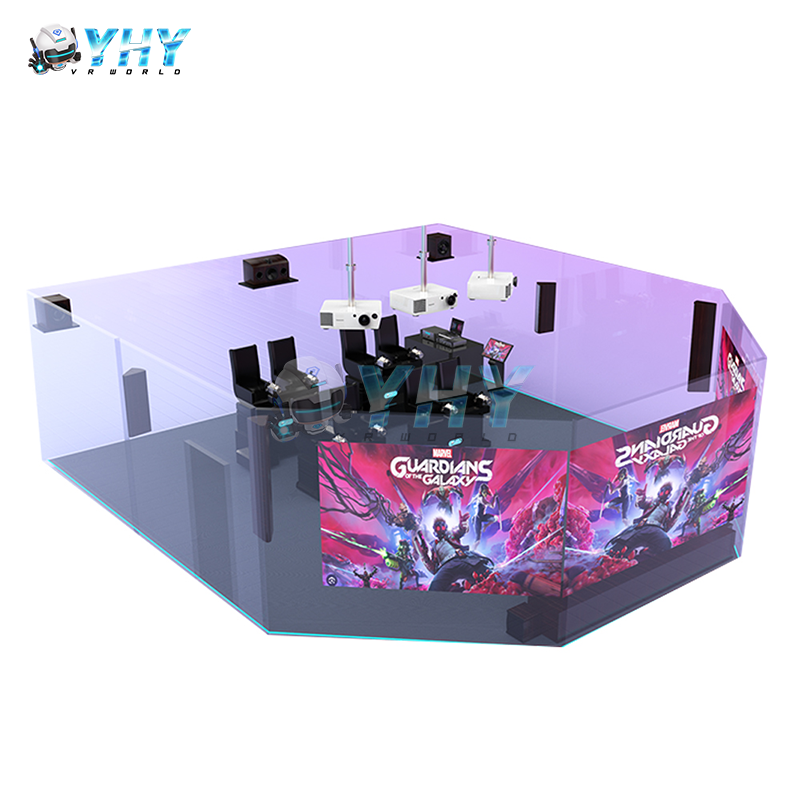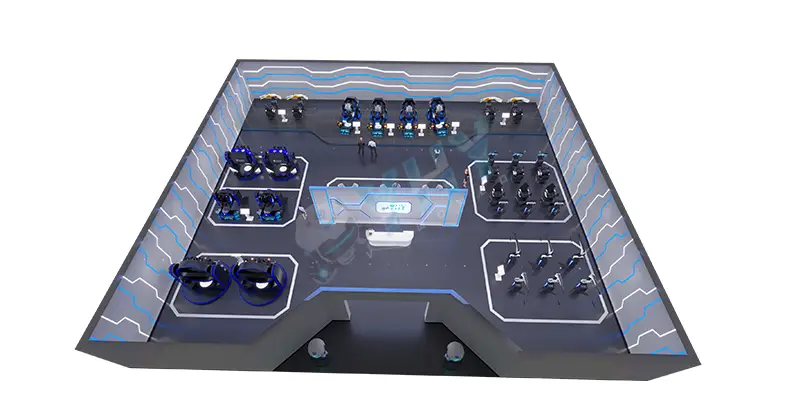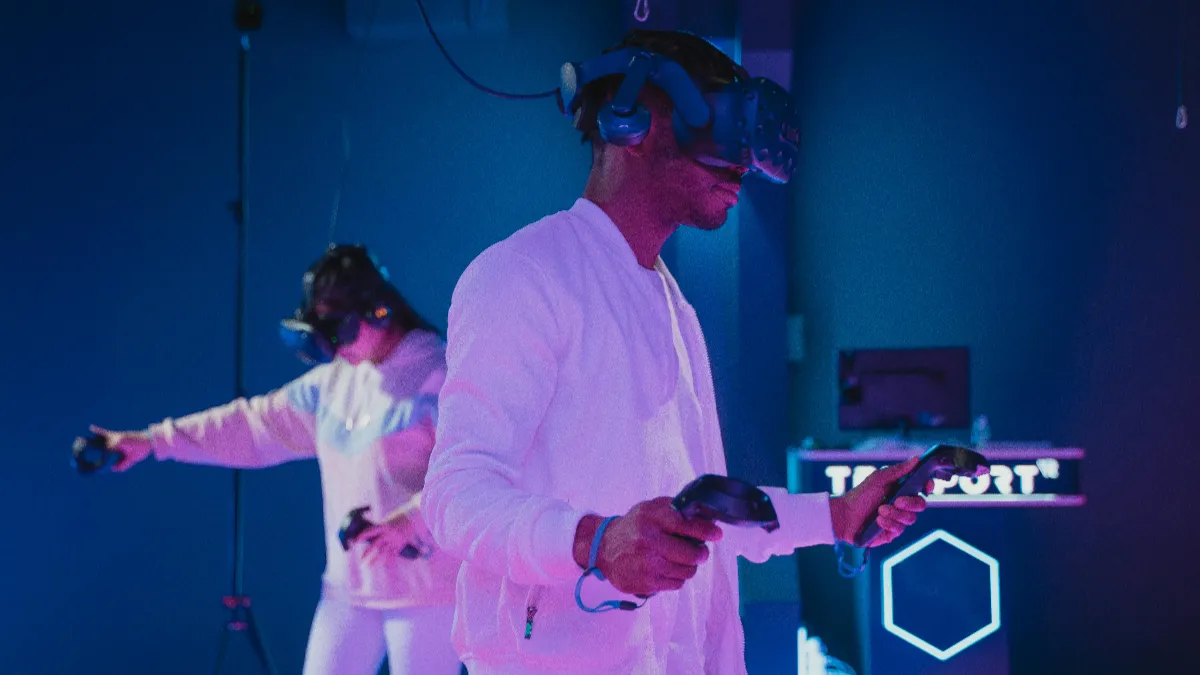मनोरंजन उद्योग लगातार विकसित हो रहा है, और 5D और 7D सिनेमाघरों जैसे इमर्सिव सिनेमाई अनुभव थीम पार्कों में लोकप्रिय आकर्षण बन गए हैं, मॉल, और वीआर दुनिया भर में केंद्र. यदि आप एक निवेशक हैं, संचालक, या निर्णय-निर्माता अपने स्थान पर इस तरह की सुविधा को जोड़ने पर विचार कर रहे हैं, 5D और 7D सिनेमा के बीच के अंतर को समझना एक सूचित विकल्प बनाने के लिए महत्वपूर्ण है.
यह लेख प्रमुख भेदों को तोड़ता है, तकनीकी आवश्यकताएं, व्यावसायिक कारक, और 5D और 7D सिनेमाघरों के लिए मामलों का उपयोग करें - और YHY के साथ साझेदारी क्यों करें आपकी परियोजना को सफलतापूर्वक जीवन में ला सकता है.
5 डी सिनेमा क्या है? प्रमुख विशेषताएं और प्रौद्योगिकी

5डी सिनेमा पारंपरिक 3 डी फिल्म अनुभवों का एक बढ़ाया विकास है. यह शारीरिक प्रभावों के साथ 3 डी दृश्यों को जोड़ती है जो कई इंद्रियों को उत्तेजित करती है, अधिक इमर्सिव वातावरण बनाना. मुख्य विचार न केवल दृष्टि और ध्वनि बल्कि स्पर्श और गति को भी संलग्न करना है.
5 डी सिनेमा की विशिष्ट विशेषताओं में शामिल हैं:
- 3डी प्रोजेक्शन सिस्टम गहराई की धारणा प्रदान करना.
- मोशन सीटें यह ऑन-स्क्रीन एक्शन के साथ सिंक्रनाइज़ेशन में चलते हैं.
- पर्यावरणीय प्रभाव जैसे हवा, बारिश, कोहरा, और मौसम या सेटिंग्स का अनुकरण करने के लिए खुशबू.
- अतिरिक्त स्पर्श प्रतिक्रिया सीट कंपन या हवा के विस्फोटों की तरह.
इन तत्वों को ध्यान से समन्वित किया जाता है ताकि फिल्म को "अंदर" होने की भावना को बढ़ाया जा सके, 5 डी सिनेमाया बनाना शॉर्ट के लिए लोकप्रिय है, रोमांचकारी फिल्में अक्सर मनोरंजन पार्क या शॉपिंग मॉल में पाई जाती हैं.
7D सिनेमा क्या है? उन्नत अन्तरक्रियाशीलता समझाया
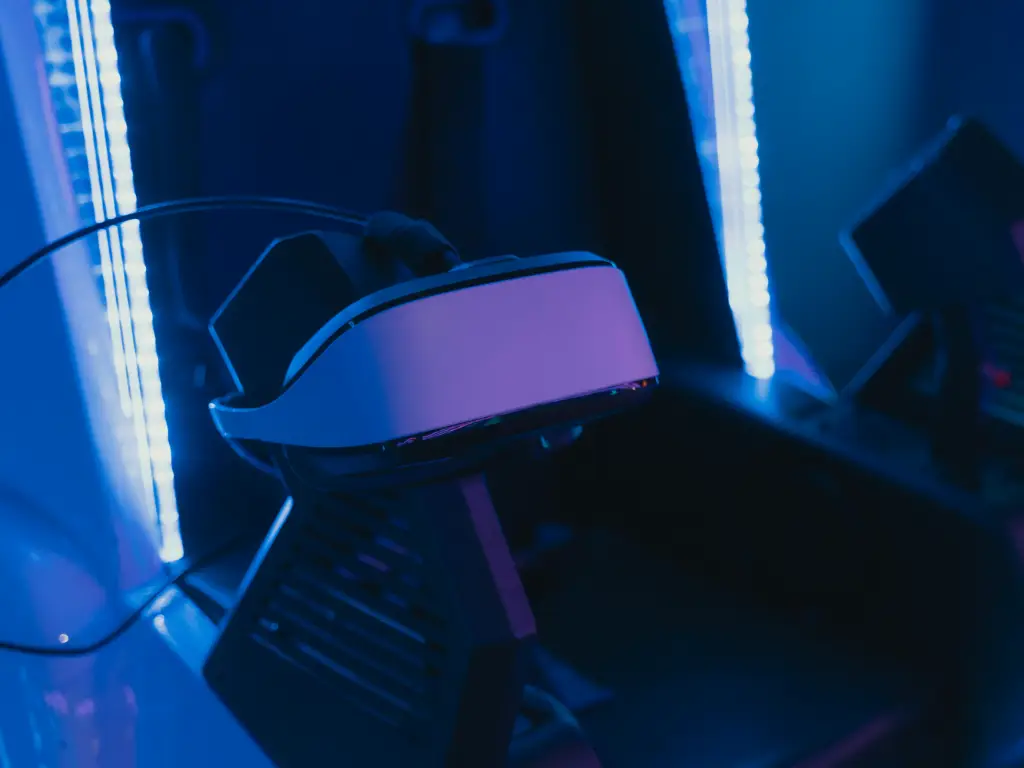
7डी सिनेमा पारंपरिक 5 डी सेटअप में अन्तरक्रियाशीलता और उन्नत प्रौद्योगिकी को एकीकृत करके इमर्सिव अनुभव को आगे ले जाता है. जबकि इसमें सभी दृश्य शामिल हैं, गति, और 5 डी के पर्यावरणीय प्रभाव, 7D जोड़ता है:
- इंटरैक्टिव गेमप्ले तत्व: ऑडियंस हैंडहेल्ड डिवाइस का उपयोग करके भाग ले सकते हैं, बंदूकें, या सीटों में एम्बेडेड नियंत्रण, अक्सर शूटिंग या एडवेंचर गेम्स में प्रतिस्पर्धा.
- वास्तविक समय की प्रतिक्रिया: सिस्टम उपयोगकर्ता कार्यों को ट्रैक करता है और तदनुसार कहानी को समायोजित करता है या स्कोरिंग करता है.
- बढ़ाया गति सिमुलेटर: अधिक यथार्थवाद के लिए अधिक सटीक और गतिशील सीट आंदोलनों.
- बहुमूत्र प्रभाव: अतिरिक्त शारीरिक प्रभाव, जैसे बुलबुले, धुआँ, या गर्मी, यह उपयोगकर्ता इनपुट पर प्रतिक्रिया करता है.
7डी सिनेमाघरों का व्यापक रूप से उन स्थानों में उपयोग किया जाता है जो अन्तरक्रियाशीलता और मनोरंजन मूल्य पर जोर देते हैं, जैसे कि वीआर अनुभव केंद्र, थीम पार्क, आर्केड हॉल, और विज्ञान संग्रहालय. उनके आकर्षक गेमप्ले और गतिशील प्रभाव उन्हें युवा दर्शकों को आकर्षित करने के लिए आदर्श बनाते हैं, परिवार, और उच्च-ऊर्जा की तलाश में तकनीक-प्रेमी आगंतुक, इमर्सिव एडवेंचर.
साइड-बाय-साइड तुलना: 5डी बनाम 7 डी सिनेमा अनुभव
| विशेषता | 5D सिनेमा | 7D सिनेमा |
| विजुअल्स | 3D फिल्म प्रक्षेपण | 3डी फिल्म इंटरैक्टिव सामग्री के साथ |
| गति | मोशन सीटें फिल्म के लिए सिंक्रनाइज़ की गईं | उपयोगकर्ता नियंत्रण के साथ उन्नत गति सीटें |
| पर्यावरणीय प्रभाव | हवा, बारिश, कोहरा, महक | हवा, बारिश, कोहरा, महक + बबल, गर्मी, धुआँ |
| अन्तरक्रियाशीलता | निष्क्रिय देखना | सक्रिय उपयोगकर्ता भागीदारी (शूटिंग खेल, स्कोर ट्रैकिंग) |
| सामग्री प्रकार | पूर्व-रिकॉर्ड की गई फिल्में | इंटरैक्टिव खेल और फिल्में |
| दर्शकों की व्यस्तता | मुख्य रूप से दृश्य और भौतिक विसर्जन | भौतिक विसर्जन + गेमप्ले सगाई |
| वीआर एकीकरण | दुर्लभ या वैकल्पिक | अक्सर पूर्ण विसर्जन के लिए वीआर हेडसेट के साथ एकीकृत |
| विशिष्ट स्थल | थीम पार्क, मॉल, पर्यटन स्थल | वीआर केंद्र, मनोरंजनकारी उद्यान, जुआ खेलने वाले क्षेत्र |
जबकि 5 डी सिनेमा विसर्जन पर केंद्रित एक समृद्ध संवेदी अनुभव प्रदान करता है, 7डी सिनेमा अन्तरक्रियाशीलता के साथ मनोरंजन के संयोजन से पूर्व को बढ़ाता है, सिनेमा और गेमिंग के बीच एक हाइब्रिड बनाना.
यह पता लगाने के लिए कि कैसे 5 डी और 7 डी 3 डी जैसे अन्य प्रारूपों के साथ तुलना करते हैं, 4डी, और एक्सडी, हमारे पूर्ण गाइड की जाँच करें: 3 डी के बीच क्या अंतर है, 4डी, 5डी, 6डी, 7डी, 8डी, 9डी, एक्सडी सिनेमा थिएटर?
व्यापारिक विचार: कौन सा अधिक लाभदायक है?
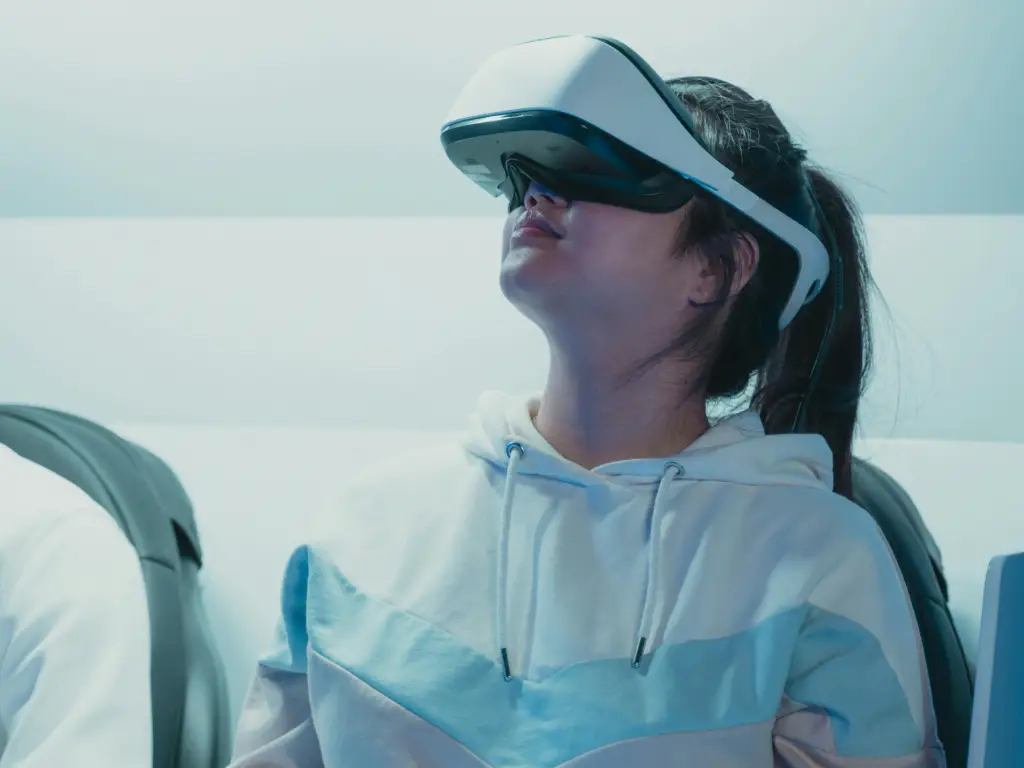
यह मूल्यांकन करते समय कि क्या 5D या 7D सिनेमा में निवेश करना है, लाभप्रदता स्थल मालिकों और परियोजना निर्णय लेने वालों के लिए एक महत्वपूर्ण चिंता है. जबकि दोनों प्रारूप इमर्सिव अनुभव प्रदान करते हैं, उनकी राजस्व क्षमता और परिचालन मांगों में काफी भिन्नता है.
प्रारंभिक निवेश और सेटअप
5डी सिनेमा सिस्टम आमतौर पर स्थापित करने के लिए अधिक सस्ती हैं. उन्हें कम घटकों की आवश्यकता होती है, जैसे कि मोशन सीट और पर्यावरणीय प्रभाव मशीनें, और आमतौर पर पूर्व-प्रस्तुत 3 डी फिल्मों पर भरोसा करते हैं. के विपरीत, 7D सिनेमाघरों में उन्नत गति सिमुलेटर शामिल हैं, इंटरैक्टिव शूटिंग सिस्टम, और वास्तविक समय सामग्री प्रसंस्करण, अग्रिम लागत अधिक है.
परिचालन लागत और जटिलता
5D सिनेमाघरों के सरल बुनियादी ढांचे के परिणामस्वरूप कम रखरखाव और कम कर्मचारियों की आवश्यकताएं होती हैं. 7डी सिस्टम, तथापि, इंटरैक्टिव हार्डवेयर और सॉफ्टवेयर की जटिलता के कारण अधिक लगातार तकनीकी सहायता की मांग करें. ऊर्जा की खपत और सिस्टम अंशांकन भी अधिक हैं.
राजस्व क्षमता और ग्राहक प्रतिधारण
7डी सिनेमाघरों में अपने इंटरैक्टिव और गेम-जैसे अनुभवों के लिए उच्च टिकट की कीमतों को सही ठहराने की प्रवृत्ति है. वे युवा दर्शकों और तकनीक-प्रेमी आगंतुकों के लिए दृढ़ता से अपील करते हैं, जो नई चुनौतियों के लिए लौटने या अपने पिछले स्कोर को हराने की अधिक संभावना रखते हैं. यह आगंतुक प्रतिधारण और जीवन भर के ग्राहक मूल्य को बढ़ाता है, दीर्घकालिक राजस्व सृजन में 7 डी बढ़त दे रही है.
आरओआई परिप्रेक्ष्य
जबकि 5D कम प्रारंभिक लागतों के कारण एक तेज ब्रेक-ईवन बिंदु की पेशकश कर सकता है, 7डी में अधिक दीर्घकालिक कमाई क्षमता है, विशेष रूप से प्रतिस्पर्धी या नवाचार-चालित बाजारों में. यदि आपका स्थल दर्शकों की सगाई को लक्षित करता है और ट्रैफ़िक को दोहराता है, 7D संभवतः अधिक लाभदायक विकल्प है.
अंत में, 5D और 7D के बीच चयन आपके रणनीतिक लक्ष्यों पर निर्भर करता है, बजट, और लक्षित दर्शकों. कई आधुनिक ऑपरेटरों के लिए, 7डी अनुभव मूल्य और वाणिज्यिक रिटर्न के बीच सबसे अच्छा संतुलन प्रदान करता है.
अनुमानित आरओआई तुलना: 5डी बनाम 7 डी सिनेमा
| मीट्रिक | 5D सिनेमा | 7D सिनेमा |
| आरंभिक निवेश | $25,000 - $60,000 | $60,000 - $120,000 |
| स्थापना जटिलता | कम | मध्यम से उच्च |
| औसत टिकट मूल्य | $5 - $8 | $8 - $15 |
| दैनिक क्षमता (प्रति 20 सीट एकक) | 200 - 300 लोग | 150 - 250 लोग |
| आगंतुक दर दोहराएं | मध्यम से कम | उच्च (Gamified सामग्री वापसी यात्राओं को प्रोत्साहित करती है) |
| मेंटेनेन्स कोस्ट | कम | मध्यम से उच्च |
| अनुमानित आरओआई चक्र | 12 - 18 महीने | 18 - 30 महीने |
| राजस्व वृद्धि क्षमता | मध्यम | उच्च (सामग्री अपडेट और अन्तरक्रियाशीलता के माध्यम से) |
कृपया ध्यान: अनुमान औसत बाजार डेटा और विशिष्ट स्थापना आकारों पर आधारित हैं. स्थान के आधार पर लागत अलग -अलग हो सकती है, सामग्री लाइसेंस, और हार्डवेयर अनुकूलन. हमसे संपर्क करें एक अनुरूप उद्धरण के लिए.
5D और 7D सिनेमा सिस्टम स्थापित करने के लिए तकनीकी आवश्यकताएँ
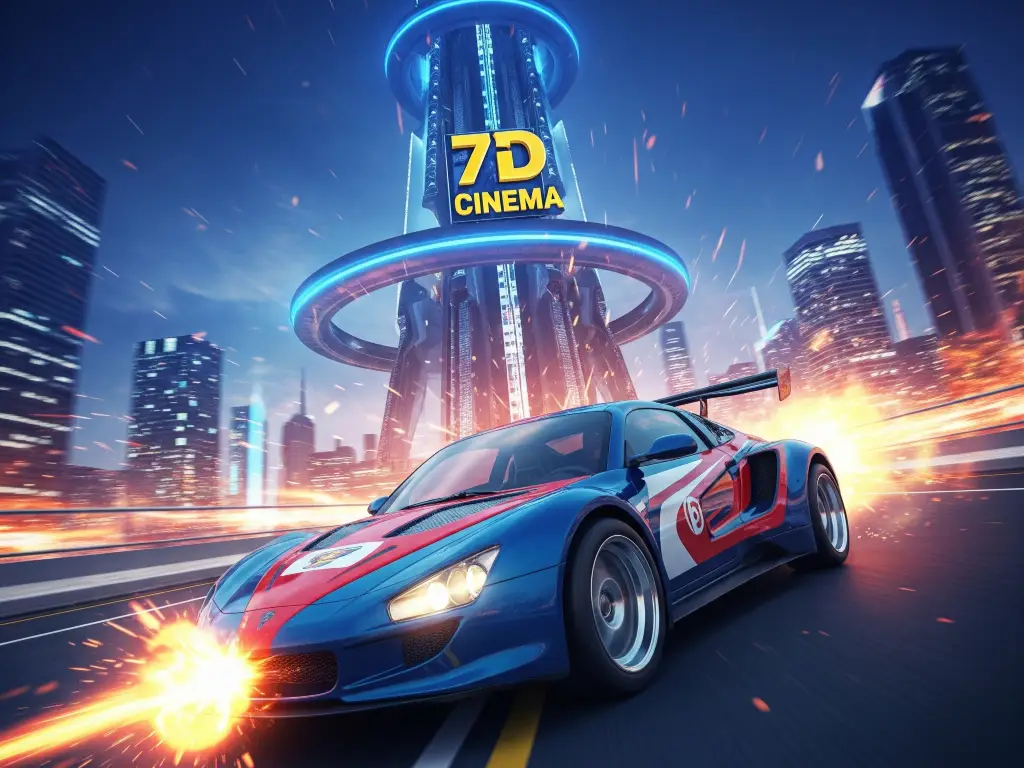
5D या 7D सिनेमा को लागू करने के लिए सुचारू संचालन और दर्शकों की सुरक्षा सुनिश्चित करने के लिए कुछ तकनीकी मानदंडों को पूरा करने की आवश्यकता है.
अंतरिक्ष और बुनियादी ढांचा
- दोनों 5 डी और 7 डी सिनेमाघरों को नियंत्रित प्रकाश व्यवस्था और गति सीटों के लिए स्थान के साथ समर्पित कमरों की आवश्यकता है.
- 7डी सिनेमाघरों को आमतौर पर इंटरैक्टिव उपकरणों को समायोजित करने और उपयोगकर्ता आंदोलन के लिए अनुमति देने के लिए अधिक स्थान की आवश्यकता होती है.
विद्युत और नेटवर्क सेटअप
- विश्वसनीय बिजली की आपूर्ति महत्वपूर्ण है; 7डी सिस्टम अक्सर अतिरिक्त हार्डवेयर के कारण अधिक ऊर्जा का उपभोग करते हैं.
- 7डी सिनेमाघरों को इंटरैक्टिव घटकों के लिए स्थिर नेटवर्क कनेक्टिविटी की भी आवश्यकता है, सॉफ्टवेयर अपडेट, और स्कोरिंग सिस्टम.
उपकरण स्थापना
- 5डी सिनेमाघरों में मोशन कुर्सियां स्थापित करना शामिल है, सिंक्रनाइज़्ड इफेक्ट मशीन (प्रशंसक, पानी के स्प्रे), और प्रक्षेपण प्रणाली.
- 7डी सिनेमाघरों ने लेजर गन की तरह इंटरैक्टिव हार्डवेयर जोड़ें, नियंत्रण कंसोल, और उन्नत गति सिमुलेटर विशेष स्थापना और अंशांकन की आवश्यकता है.
रखरखाव और समर्थन
- डाउनटाइम को कम करने के लिए अनुसूचित निवारक रखरखाव महत्वपूर्ण है.
- 7डी सिनेमाघरों को यांत्रिक और सॉफ्टवेयर दोनों समस्या निवारण दोनों से परिचित प्रशिक्षित तकनीशियनों की आवश्यकता होती है.
- बैकअप सिस्टम और सॉफ्टवेयर सपोर्ट कॉन्ट्रैक्ट्स की सिफारिश की जाती है, विशेष रूप से 7 डी सेटअप के लिए.
उचित योजना और पेशेवर स्थापना दीर्घायु और इष्टतम प्रदर्शन सुनिश्चित करें, परिचालन हिचकी को कम करना.
क्यों 5D/7D VR सिनेमा समाधान के लिए yhy चुनें
स्थापना करा 2016, हाँ वी.आर चीन के पहले 360 ° घूर्णन गति सिम्युलेटर का नेतृत्व किया. हमारे प्रमुख yhy क्रॉसिंग 2, एक के रूप में डिज़ाइन किया गया एक्सडी वीआर सिनेमा प्लैटफ़ॉर्म, हमारे मालिकाना 3DOF प्रौद्योगिकी को एकीकृत करता है - स्मूथिंग, पारंपरिक 3DOF या 6DOF सिस्टम की तुलना में अधिक सटीक गति. पारंपरिक सिमुलेटरों के विपरीत जो पूरी तरह से सरल ‘डाउन रोटेशन पर भरोसा करते हैं, हमारा वीआर मोशन सिस्टम बारीकियों की पेशकश करता है, मल्टी - अक्ष आंदोलन जो वीआर मोशन सिकनेस को बहुत कम करता है.
अपने स्वयं के 5D या 7D VR सिनेमा बनाने के लिए तैयार हैं? आज yhy से संपर्क करें एक अनुकूलित समाधान प्रस्ताव के लिए.

